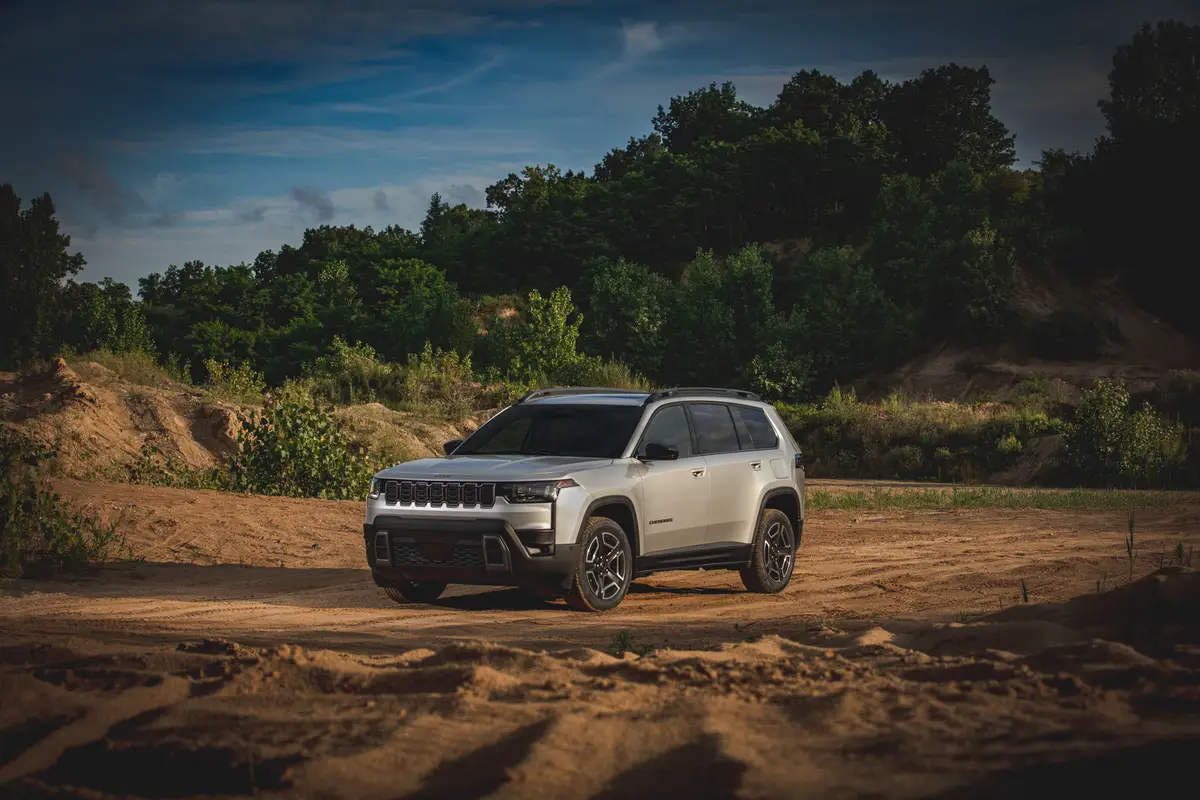Orlando Sentinel's view
The main thing you need to know about the 2006 Hummer H3: $29,500, including shipping.
That’s the base price for the H3, and for that, you get a well-equipped vehicle that has almost all the presence of more expensive versions of the H3, which can top $40,000 if you add on all the extraneous stuff that’s offered.
But this base H3, at under $30,000, is a start-ling $23,780 less than the cheapest Hummer H2, and $99,899 less than the cheapest Hummer H1. Is this because the H3 is underpriced, or because the H1 and H2 are overpriced?
Um, yes. Both.
The H3 is, of course, smaller and less powerful than its siblings. The H3’s overall length is 186.7 inches, including the big spare tire that hangs on the tailgate. Overall length of the H2 is 189.8 inches. But there’s a big difference in width: The H2 is 81.2 inches wide, and the H3 is 74.7 inches wide.
While the H2 is loosely based on the Chevrolet Suburban, the H3 is based on the Chevrolet Colorado pickup-truck platform. The Colorado and its twin, the GMC Canyon, were developed with cost-cutting in mind, using fairly simple frames and basic underpinnings, and a limited choice of engines.
Unfortunately for the H3, this also means that the engine choice is limited to one: A 3.5-liter, 220-horsepower inline five-cylinder. This is essentially the 4.2-liter inline six-cylinder from the Chevrolet TrailBlazer SUV, minus one cylinder. The four-cylinder engine offered in the Colorado, but not the Hummer H3, is basically that six-cylinder engine, minus two cylinders. This keeps costs down: Internal pieces, such as pistons, fit all three engines.
If you suspect that a 220-horsepower engine strains to haul the 4,700-pound Hummer H3, you are correct. But the length of the 4.2-liter six-cylinder means it won’t fit under the Hummer hood, and a V-8 won’t fit without some cutting. Might GM be able to turbocharge or supercharge the five-cylinder in the Hummer H3? They might, indeed, but for this first year at least, we’ll have to make do with 220 horses.
This leaves Hummer in an interesting position: The big 6.0-liter V-8 in the Hummer H2 has been roundly criticized for sucking gas. So GM puts a smaller engine in the H3, which can get 20 mpg on the highway with the standard five-speed manual transmission, and it will get criticized for not having enough horsepower. Oh, well.
That five-speed manual transmission exists for one reason: To get the base price under $30,000. The vast majority of customers will ante up $1,695 extra for the four-speed automatic, which also includes electronic stability control. The hard-working automatic also effectively masks the little engine’s lack of power.
So get the automatic, the “Adventure package,” which has bigger tires and wheels and a better suspension, and a trailer-towing package, and you’re up to $32,640, which is still cheap. Very cheap. Get-it-before-they-wise-up cheap.
Because even at that price, you get air conditioning, a decent stereo, power windows and locks — really, all you need. With the towing package, you can haul 4,500 pounds, which is not great, but adequate for a medium-sized boat. You also get OnStar and the four-year/50,000-mile warranty.
And you get a vehicle that is moderately sensible around town, with plenty of room up front, adequate room in the rear. On the highway, the H3 won’t blind anyone with acceleration, but it easily maintains speed.
Off-road, though, the H3 shines, with plenty of ground clearance, a tight 37-foot turning circle, a solid low-range gearbox for rock-crawling, a locking differential, underbody shielding and tires and wheels that — even with the base model — are more than adequate. There aren’t many sophisticated tricks here, just proven, solid hardware that makes you look forward to mud holes.
This is the first time we’ve been able to use the words “Hummer” and “practical” in the same sentence, and while the H3 is no Toyota Prius, it should not cost a lot to operate, compared with other SUVs and pickups. This is a much better vehicle than it has to be.
Sentinel Automotive Editor Steven Cole Smithcan be reached at scsmith@orlandosentinel.com or 407-420-5699.
Latest news



